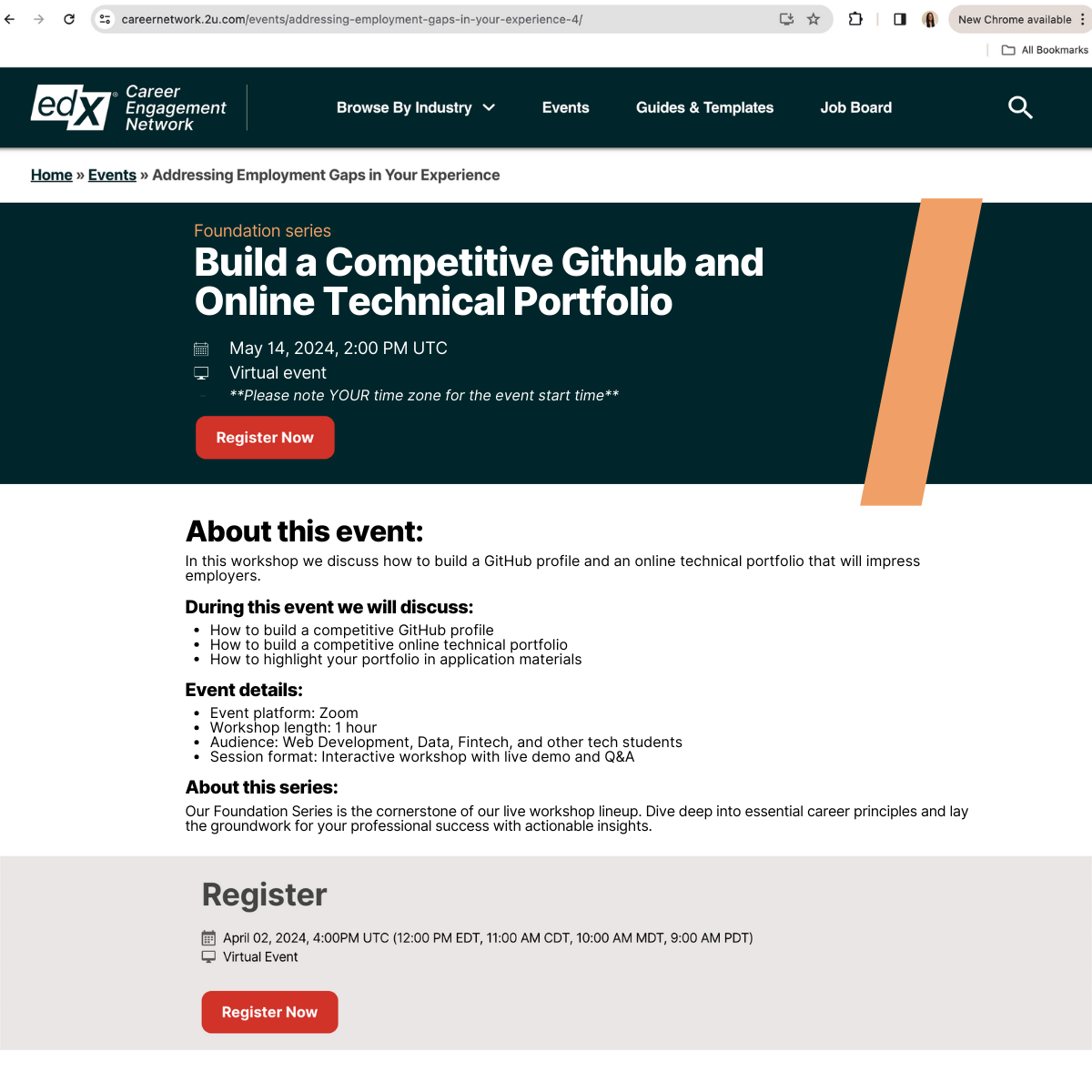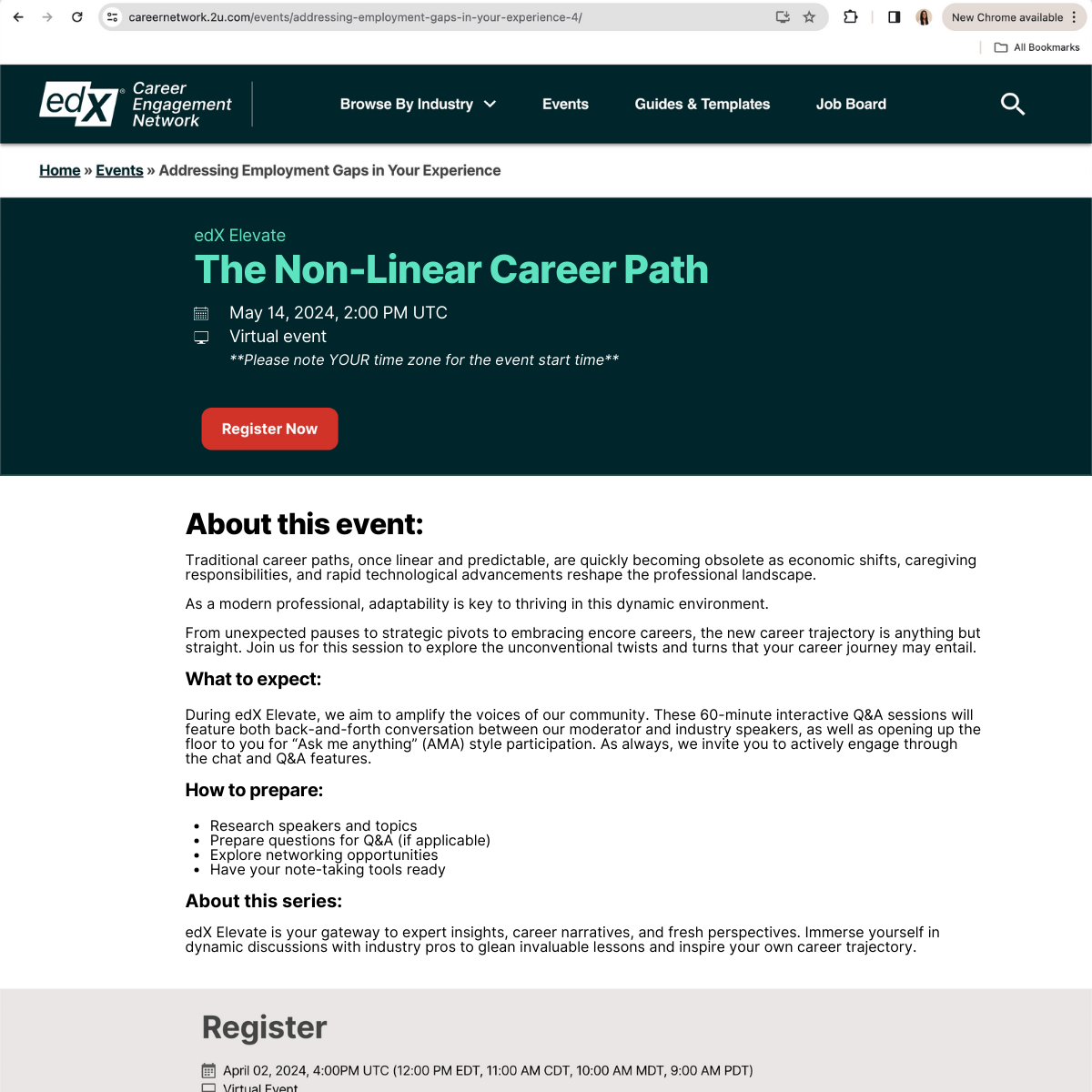What is strategy anyways?
Strategy is exactly what it sounds like—a lot. But over time, I’ve come to truly appreciate and thrive in the complexity of this field. My multifunctional background has proven to be a great asset, helping me understand the many angles and considerations that go into creative project management and strategic planning.
Fun fact: When my recent team at edX shifted from content production to a focus on content strategy, we went through a significant adjustment period to get everyone on the same page. 'Strategy means something different to everyone' was a common refrain. The truth is, strategy is broad and complex. We had to cut through the jargon and dig deeper to fully understand what this shift was about, how it aligned with our business goals, and how each team member could play an important role in the new structure.
After shifting my career back to marketing, communications, and content work from the design/build field, I've found myself drawn to balancing big-picture thinking with a focus on the details. This work's versatility allows me to tap into a wide range of skills and draw from my multidisciplinary experiences, looking at everything from the overarching vision to the finer details of each project.
Below, you can explore some of the strategic initiatives I've been a part of.
Initiative: Mojave + Tejon Media and Brand Strategy
-
Ongoing Project: This project is for a client that I support in my freelance work. I recently met with the owner of Mojave + Tejon to discuss her needs, revisit the brand’s positioning, and develop short- and long-term plans for content and media support and strategy.
-
Mojave + Tejon is a boutique shop in northwest Denver that focuses on handmade goods and the stories that they carry. The goal of this project is to enhance Mojave + Tejon’s reach with a strengthened marketing and social media presence, establish the brand’s voice and key differentiator as a community- and story-focused marketplace, and update the shop’s channels with high-quality media that aligns with the values and goals of the business.
-
Due to budget and time constraints, this project is happening over the course of time. Split into 5-hour sprints, the goal is to refresh the brand’s channels gradually and in a way that honors the entire ecosystem. Meaning, taking photos that can be utilized across channels including social media and the website, not just checking one-off boxes and chipping away little by little.
-
We are working on establishing systems for collecting data on customers, purchasing trends, and social media behaviors.
-
The deliverables of this project include an update website with relevant copy, branded assets, photos, and, eventually, a functioning newsletter and blog. Additional deliverables include a library of media assets, social media campaigns, and updated brand guidelines.
-
Coming soon
-
Because this is a freelance project, I am the sole contributor for all systems and deliverables.
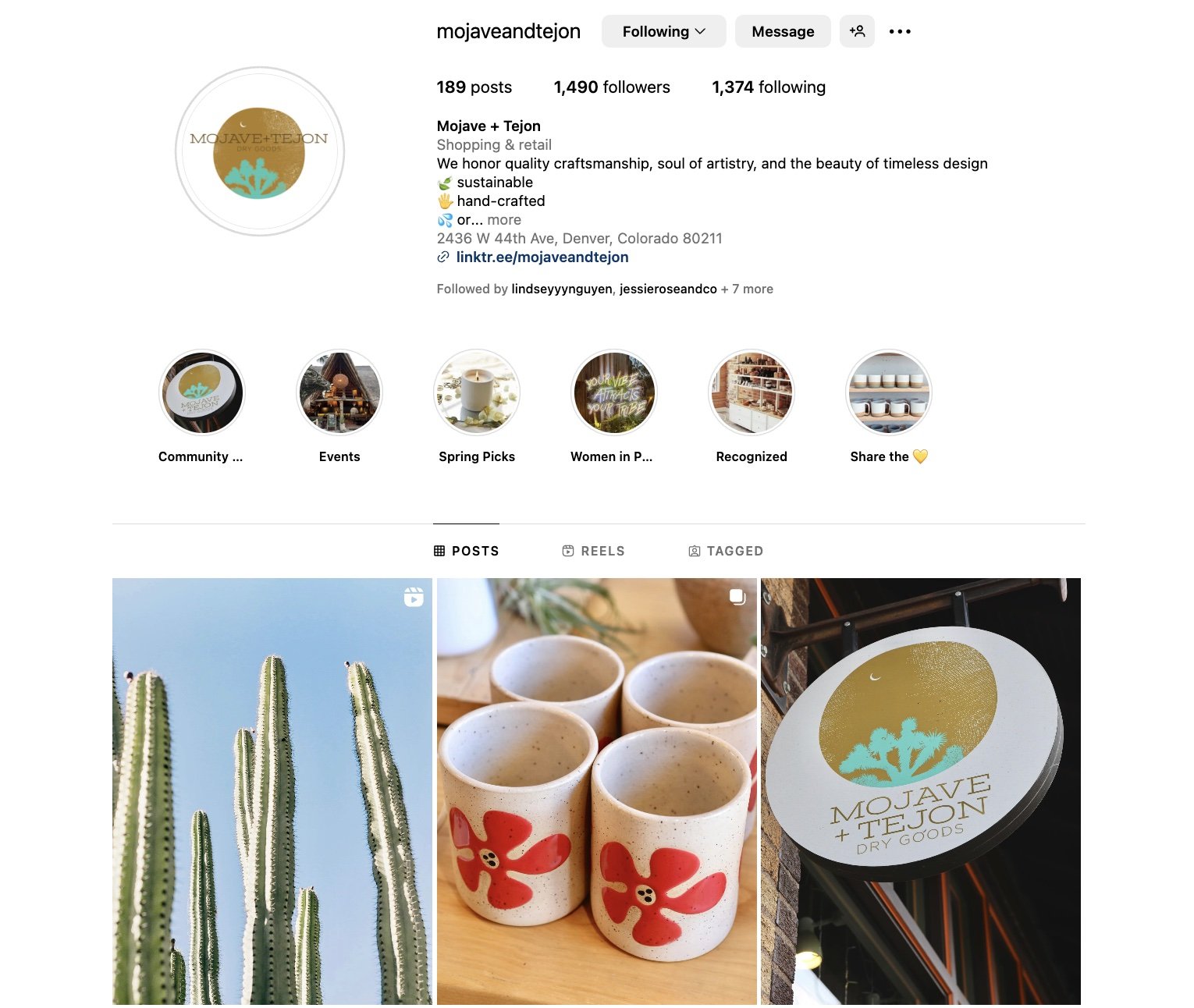
Updated grid for Mojave + Tejon. Photos taken, copy written, and posts deployed by me in alignment with our strategy and brand differentiator: community focused content.
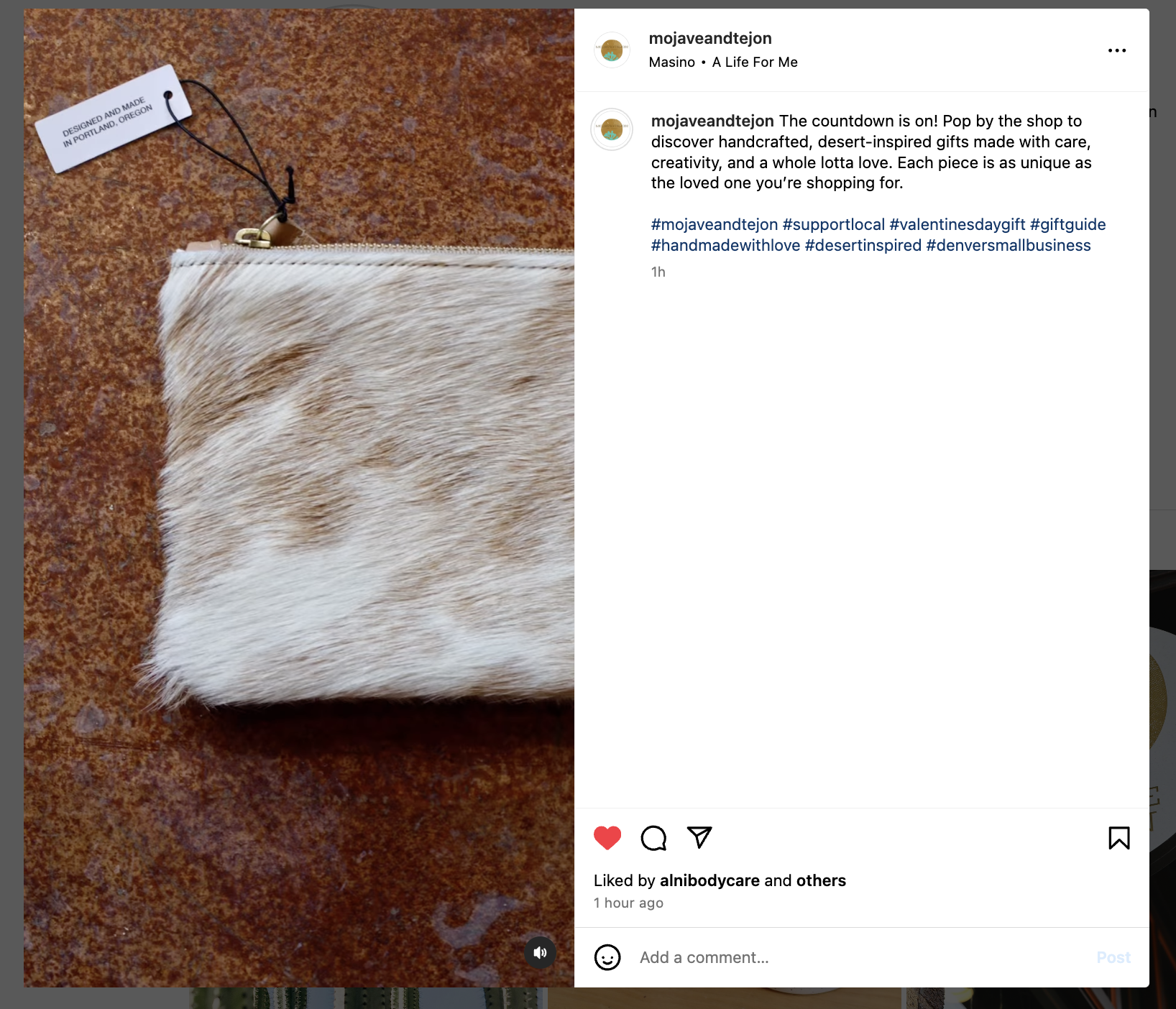
Instagram reel curated and published by me.
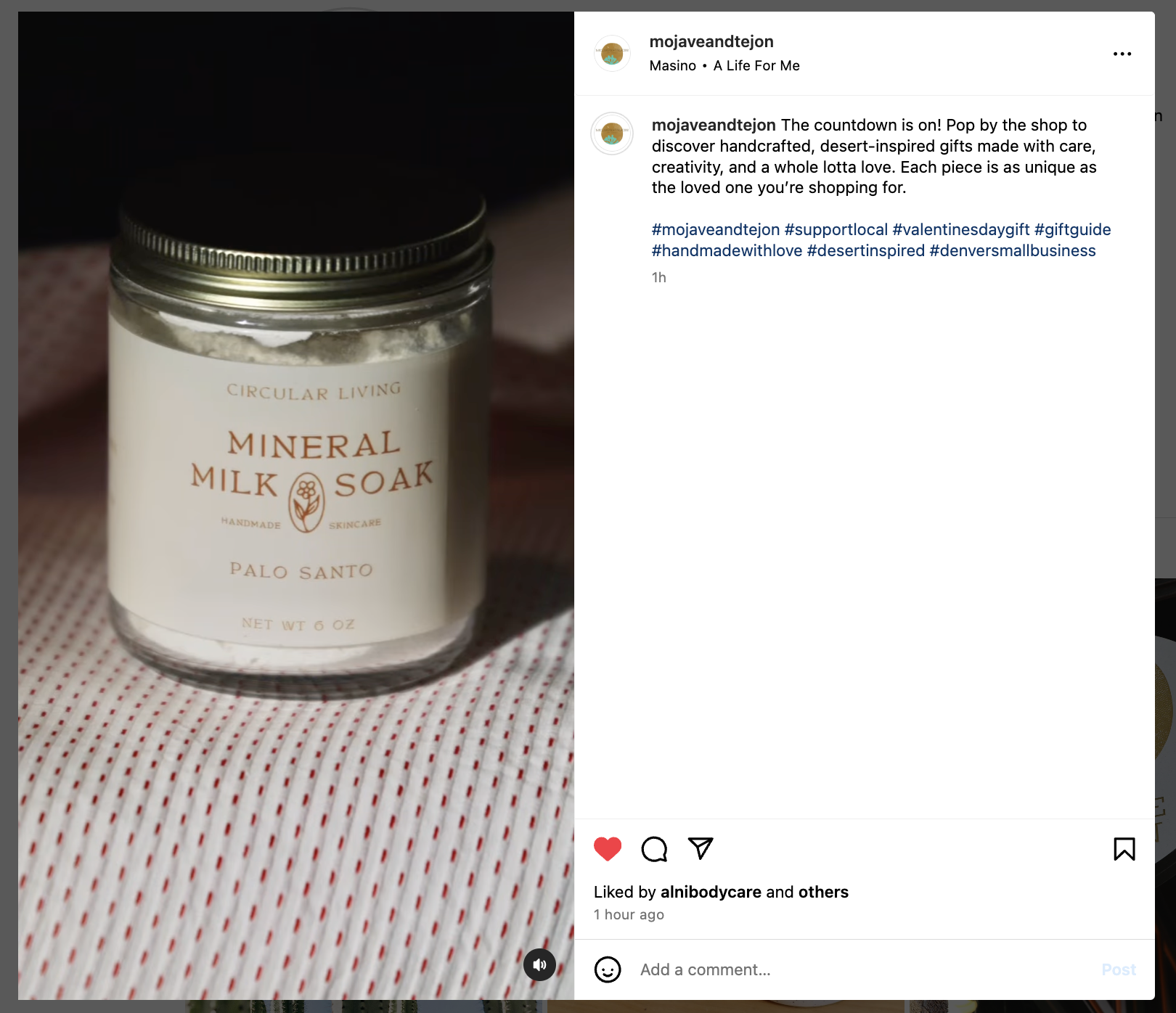
Instagram reel curated and published by me.

Instagram reel curated and published by me.
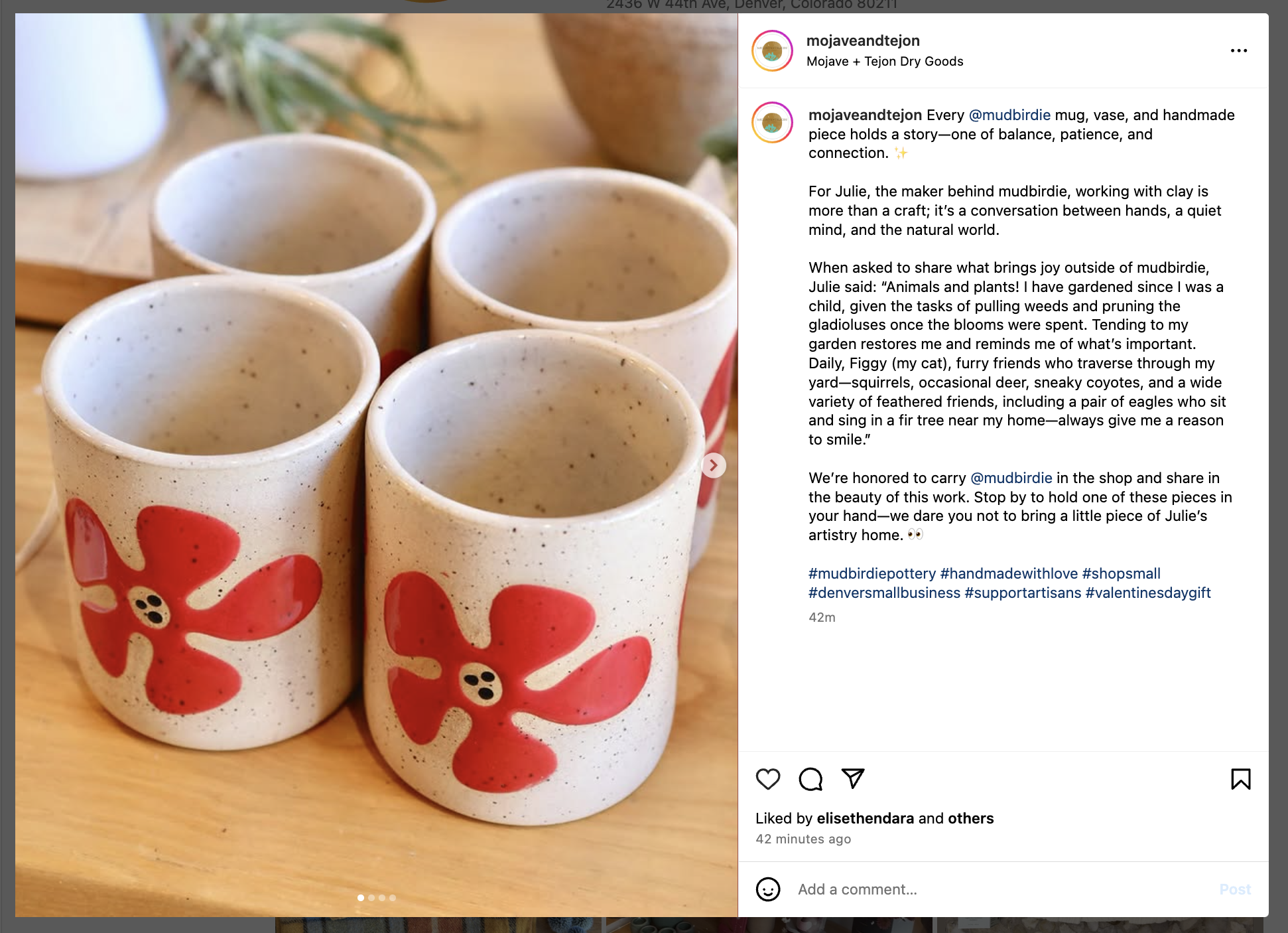
Instagram post and photo by me.

Instagram post and photo by me.
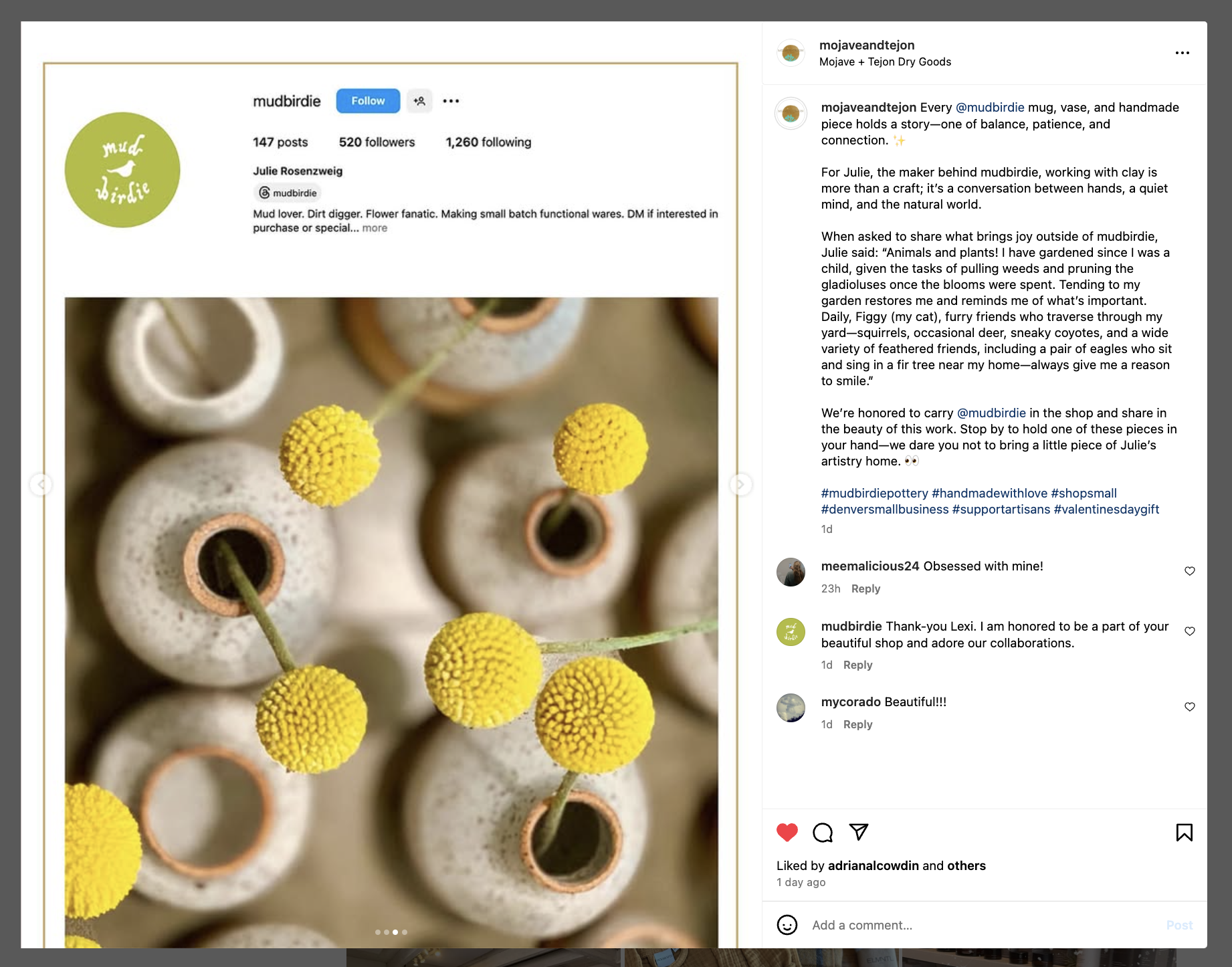
Instagram post and graphic by me using an image sourced from mudbirdie.
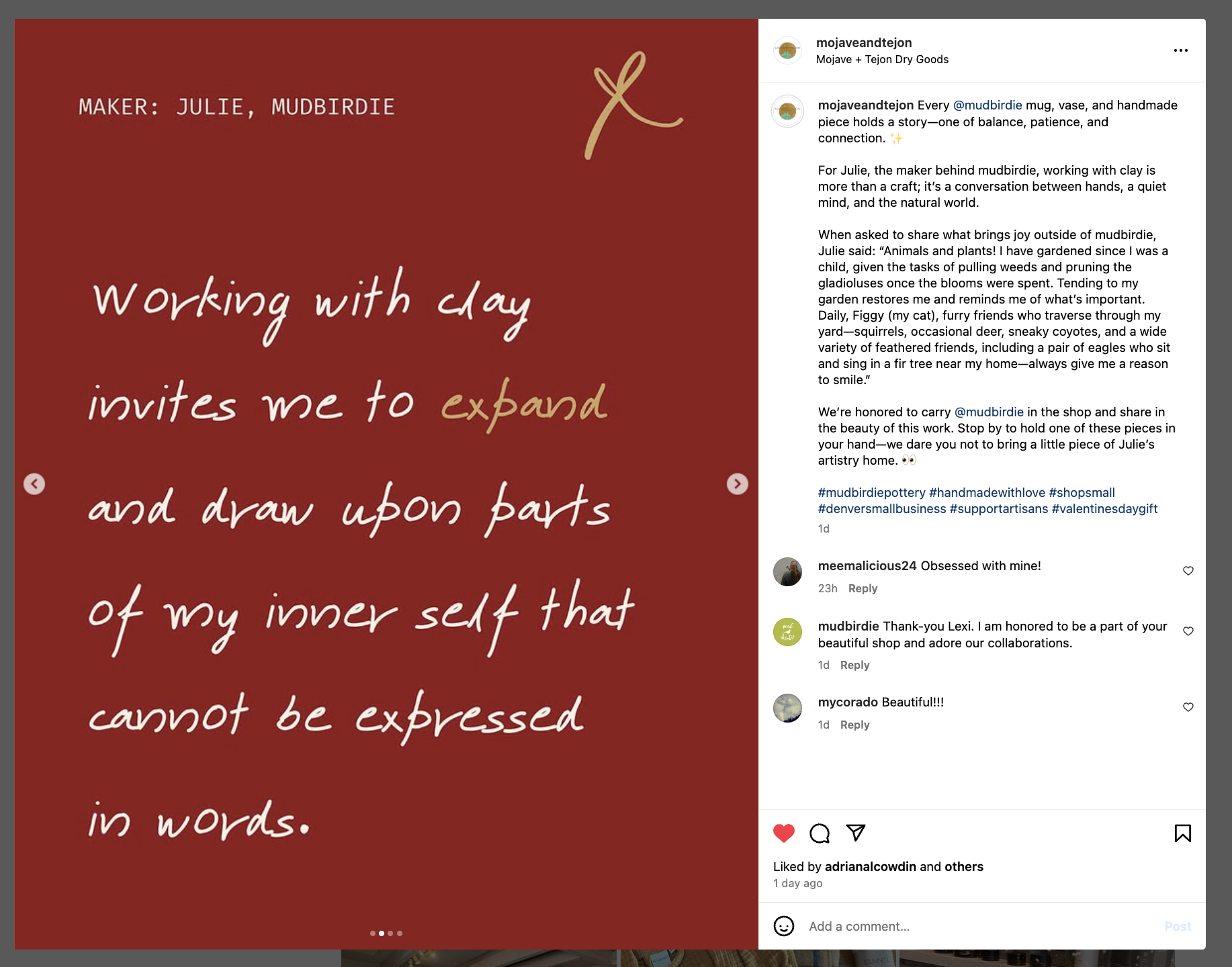
Instagram graphic and post by me.

Instagram post, photo, and caption by me.

Instagram post and caption by me. Photo provided by Olive n' Suede.

Instagram post, photo, and caption by me.

Instagram post, graphic/image, and caption by me.

Instagram post, graphic/image, and caption by me.

Previous grid for Mojave + Tejon (photos and media by shop owner).
Initiative: edX Career Virtual Events Portfolio
-
Completed Project: The overarching events portfolio has been finalized, with ongoing rollout of offerings. Currently, at least 3 events are scheduled weekly, guided by continuous data collection and feedback to inform iterative improvements and portfolio management decisions.
-
This project centers on revitalizing our career team’s current events portfolio while introducing new offerings. It harnesses quantitative and qualitative data, stakeholder insights, market research, and other inputs to pinpoint constraints, pain points, and user preferences for continued development and iteration. These insights guided the development of the 2024 events portfolio and strategy, which evolves through ongoing internal and external feedback.
-
Our approach to this project was phased. It began with an extensive research phase, involving empathy interviews with key stakeholders and analysis of both qualitative and quantitative user data. This allowed us to uncover areas for improvement, identify opportunities, and pinpoint gaps in our current portfolio.
Building on the research findings, we adopted a broad perspective, initially focusing on refining the overall events strategy before diving into specific details and considerations for each new or revised offering.
Furthermore, we collaborated closely with our data teams to enhance event launches. This included updating surveys with new questions, which not only helped in refining our approach but also enabled us to effectively communicate the story of these offerings internally and externally.
-
During our research phase, we conducted over 10 informational interviews involving 13 participants from 8 different teams across our organization and beyond. We meticulously analyzed survey data from more than 15 sources spanning 4 years, with a particular focus on extracting qualitative responses from over 1,100 users.
From our extensive research, we uncovered several key insights:
Our current event offerings were perceived as too generic and impersonal.
There was a lack of opportunities in the current portfolio for meaningful connection and interaction.
Stakeholders expressed dissatisfaction with the adequacy of events data for making informed decisions.
Users expressed a strong desire for increased face-to-face interaction with industry experts.
Stakeholders sought a more structured workflow for events and streamlined hosting processes.
-
The deliverables of this project encompass a revitalized events portfolio for 2024. Each offering has been expanded to encompass event types, frequency, schedules, staffing requirements, facilitation guidelines, feedback and data collection processes, event branding strategies, marketing strategies, marketing content, digital assets, and more.
-
Since the launch of our new events portfolio, we have seen an influx of positive and constructive data and feedback. This has further validated our decisions to make the portfolio more interactive and community-based, bolster our feedback channels, and respond to the varied needs of our user base, including full-time work schedules, introversion, and lack of networking opportunities.
Here are a few notable survey findings (qualitative and quantitative):
“I found hearing from people who have taken a roundabout route and landed on their feet [to be most impactful].”
“I found it very agile.”
95% of attendees were empowered to take action towards their career goals.
95% of attendees said they would attend the event again in the future.
“It was an amazing experience. Talking to real professionals and hiring managers gave me more courage and insight on how to align myself to reach my goals in my career.”
-
As the lead strategist for this project, I spearheaded my team through the research, ideation, and feedback phases. During these phases, I:
Orchestrated empathy research meetings, developed research questionnaires, and tracked insights.
Synthesized research findings into concise presentations for fellow strategists, leaders, and pertinent stakeholders.
Facilitated and coordinated ideation and brainstorming sessions with myself, team leaders, and other strategists to transform research outcomes into tangible portfolio actions, effectively conveying insights and feedback from stakeholders and users alike.
Created a visually engaging guide outlining our proposed portfolio offerings, ensuring clarity and understanding for stakeholders and internal teams, refining iteratively at each stage.
As this project advances into the content development phase for our 2024 portfolio, I've assumed a pivotal role in shaping our career brand strategy. This encompasses the creation of templates for event assets, deck presentations, and other materials, with a focus on aligning them with broader edX brand initiatives in terms of visual style, voice, and tone.
Moreover, I'm spearheading the development of event plans and content for two of our newest and most dynamic portfolio offerings. This endeavor involves:
Conducting further empathy research and data analysis
Planning and hosting ideation sessions
Crafting event marketing strategies
Developing standard operating procedures (SOPs)
Prototyping and testing landing page designs
Generating content from scratch
In addition to these responsibilities, I'm tasked with establishing a seamless (and interactive) workflow with content vendors to handle the production and development of content for select offerings in our 2024 event portfolio. This includes creating comprehensive briefs, outlining test projects, organizing event dry runs, and nurturing relationships to ensure collaborative success.
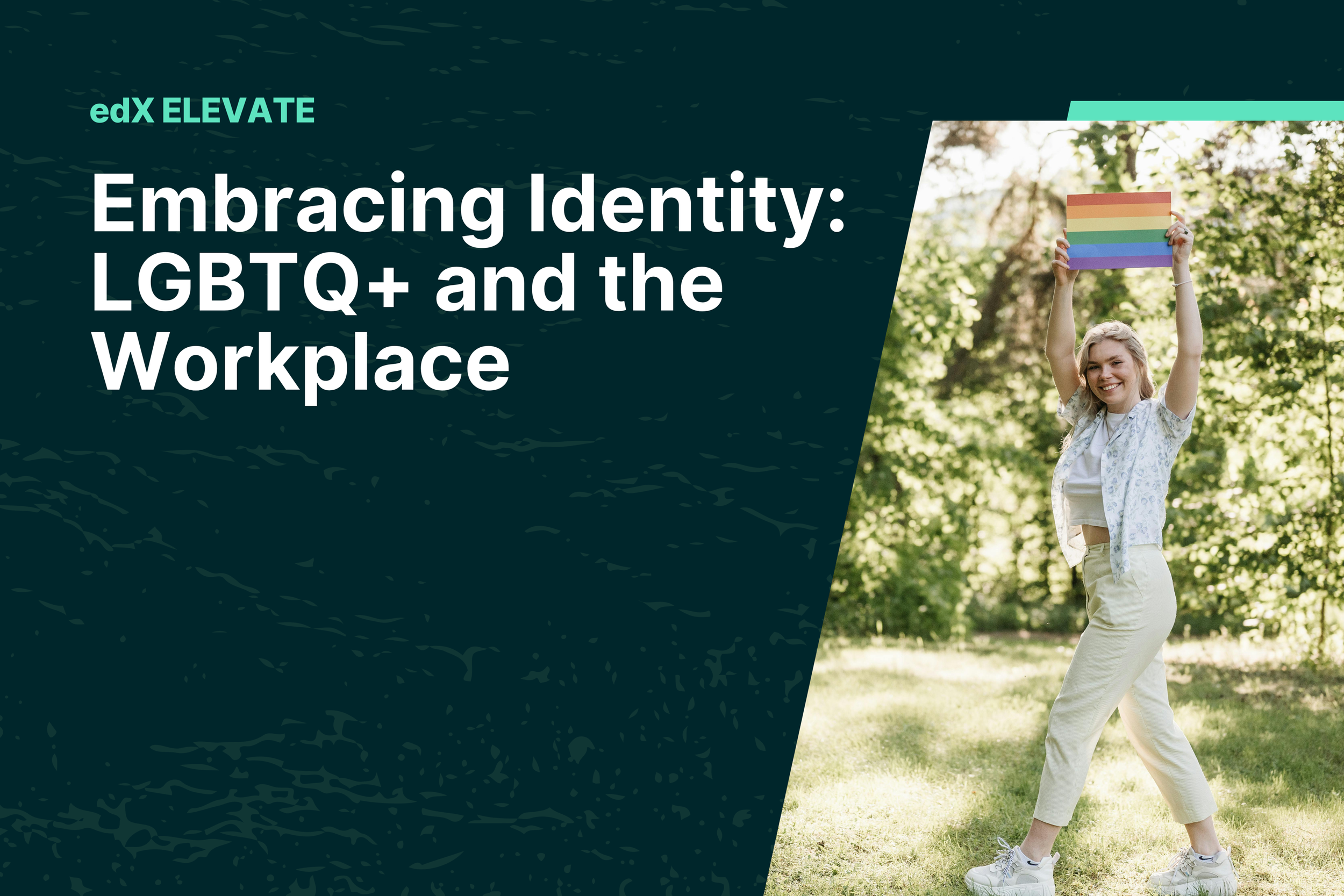
New event offering sample.

A screenshot of me hosting virtual empathy research conversations.

A look at the 2024 Career Offerings portfolio shared with partners.
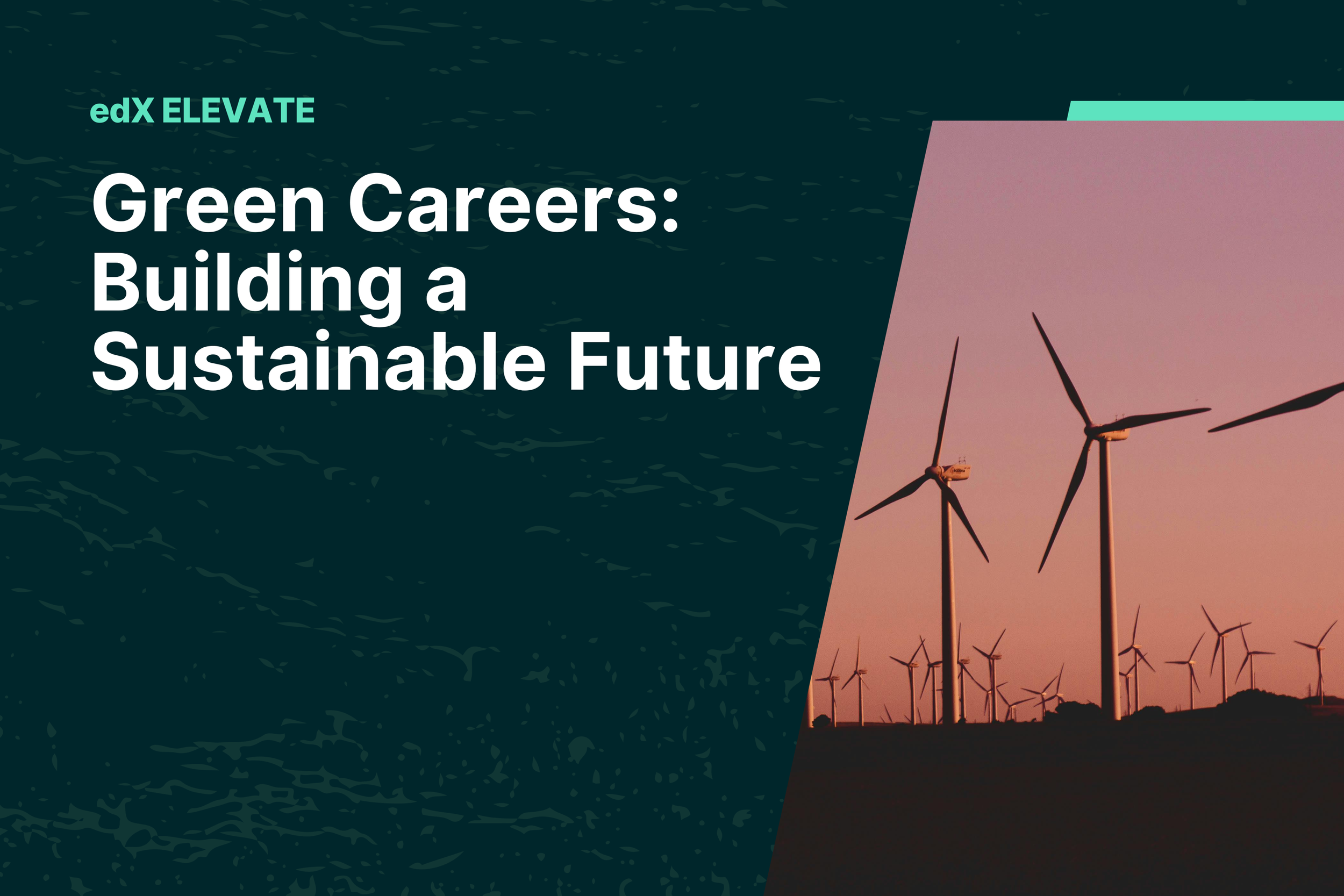
New event offering sample.

Semi-annual career fair featured image.

Speed networking image. Event design and asset development by me.

Website page showing upcoming virtual events, including topics like building a technical portfolio, freelancing, addressing employment gaps, non-linear career paths, speed networking, and resume hacking, all scheduled in May 2024.

Promotional banner for a workshop titled 'Adjust as needed' with speakers from edX, featuring two profile images.

Webinar title slide with placeholders for speaker and host names and titles.
Initiative: edX Career Event Marketing and Outreach
-
Project in-progress/ongoing: This strategic initiative is currently progressing well. Following successful piloting of a new marketing and outreach approach, the project has now entered the phase of tracking, data collection, and iterative improvements to solidify and enhance the marketing and outreach framework for all events moving forward.
-
The primary goal of this initiative is to enhance utilization, satisfaction, and preparedness for our career team’s updated events portfolio, emphasizing increased traffic to new offerings. It leverages historical outreach data, ongoing content engagement tracking, and strategic planning to target audiences effectively with tailored messaging.
-
Our approach to this project was conducted in phases and highly collaborative, starting with an extensive research phase that involved conducting empathy interviews with key stakeholders and analyzing both qualitative and quantitative user data. This process enabled us to assess current outreach strategies, understand the rationale behind existing processes, identify opportunities for enhancing outreach and expansion, and pinpoint areas for improving content to increase turnover and engagement rates.
Furthermore, our approach is centered around data and agility, with a strong emphasis on reflection, observation, and iteration following each outreach campaign.
-
During our research phase, we conducted over 4 informational interviews with participants from 4 different teams within our broader career team. We meticulously analyzed survey data from more than 3 surveys covering all types of event offerings, focusing on extracting qualitative responses. Additionally, we observed 27 previous types of outreach, paying close attention to engagement metrics such as turnout rates, open rates, messaging channels, and RSVP conversions.
From our extensive research, we uncovered several key insights:
Our current event offerings were under-marketed and overgeneralized.
There was a lack of sufficient information provided to learners on what the event is, why they should attend, and how they should prepare.
Stakeholders expressed interest in reducing heavy lifts with little engagement and increasing the amount of meaningful data for decision-making rather than relying on assumptions.
Hard constraints such as attendee maximums and increased lead times became new hurdles for outreach due to changing organizational priorities and budgeting.
Internal and external stakeholders seek more explicit expectation-setting in outreach to reduce attendee anxiety, set realistic expectations in a challenging job market, and align event communications more effectively.
-
Marketing and outreach plan
Marketing and outreach tracker
Emails with copy and images
Audience lists with appropriate #s, conversion rates, and historical data
Accessible event resources
-
Since the launch of our updated events marketing and outreach plan, we have seen significant improvements in utilization and engagement. This has validated our decisions to adjust outreach channels, enhance communications content and resourcing, and adopt a more intentional approach to events marketing and outreach.
Here are a few notable survey findings (both qualitative and quantitative):
New outreach methods led to a 15% increase in RSVP-to-attendee conversions compared to previous events.
Post-event communications and outreach led to increased survey response rates.
95% of attendees found pre-event communications and resources useful for our semi-annual career micro-conference.

Event flyer sent out in pre-event comms.

Email banner sent in pre-event comms.

Event schedule sent out in pre-event comms.

Email banner sent in pre-event comms.
Initiative: edX Career Sub-Brand Curation, Creation, and Deployment
-
Project in-progress/ongoing: This strategic initiative continues despite periods of ambiguity, frequent pauses due to organizational and structural changes, and shifting business priorities.
-
This initiative aims to bolster brand loyalty, digital engagement, and satisfaction with the quality of content across our career team’s events, outreach, curriculum, and other offerings. By positioning ourselves as a reliable and contemporary sub-brand within the edX ecosystem, we aim to build trust with our user base, streamline content creation for operational efficiency, and enhance brand recognition through consistent design, voice, and tone.
-
Our approach to this project was conducted in phases and highly collaborative, starting with an extensive research phase that involved conducting empathy interviews with key stakeholders and analyzing both qualitative and quantitative user data. This process enabled us to assess current outreach strategies, understand the rationale behind existing processes, identify opportunities for enhancing outreach and expansion, and pinpoint areas for improving content to increase turnover and engagement rates.
Furthermore, our approach is centered around data and agility, with a strong emphasis on reflection, observation, and iteration following each outreach campaign.
-
During our empathy research phase, we met with internal stakeholders from the career, marketing, and social media teams, among others, to identify, understand, and dissect edX's positioning, brand objectives, audience shifts, and more.
From our extensive research, we uncovered several key insights:
Existing career team content and offerings are misaligned with the organizational branding, lack cohesion, and, therefore, cause a deficiency in brand loyalty and awareness.
Internal stakeholders lack sufficient resources to create and align with evolving brand guidelines and expectations.
Career team members had knowledge gaps regarding brand design, as well as voice and tone alignment in copy.
Rapid and continuous organizational changes due to acquisitions and consumer brand shifts caused a lack of foundational brand knowledge and identity from a career brand perspective.
A sub-brand initiative for the career team could positively impact user loyalty and engagement, team bandwidth, and content creation processes.
-
Updated branded resources and messaging for events.
A new content request process to streamline creation, ensure cohesion, and eliminate redundancy.
Updated copy style guidelines and visual branding guidelines specific to edX Career—currently in development.
A template library for grab-and-go content creation needs—currently in development.
-
I took the initiative to propose, plan, and address a team-wide need for this project. I led the effort to connect with marketing and communications professionals to understand how the larger edX brand could influence and directly shape the FX career sub-brand.
I collaborated with our copy editors and QA teams to ensure messaging and grammatical style alignment. Additionally, I gathered feedback from my team on the types of content we have historically created, are currently creating, and need to create in the future. This effort was aimed at synthesizing and streamlining our efforts while staying on brand and relevant.
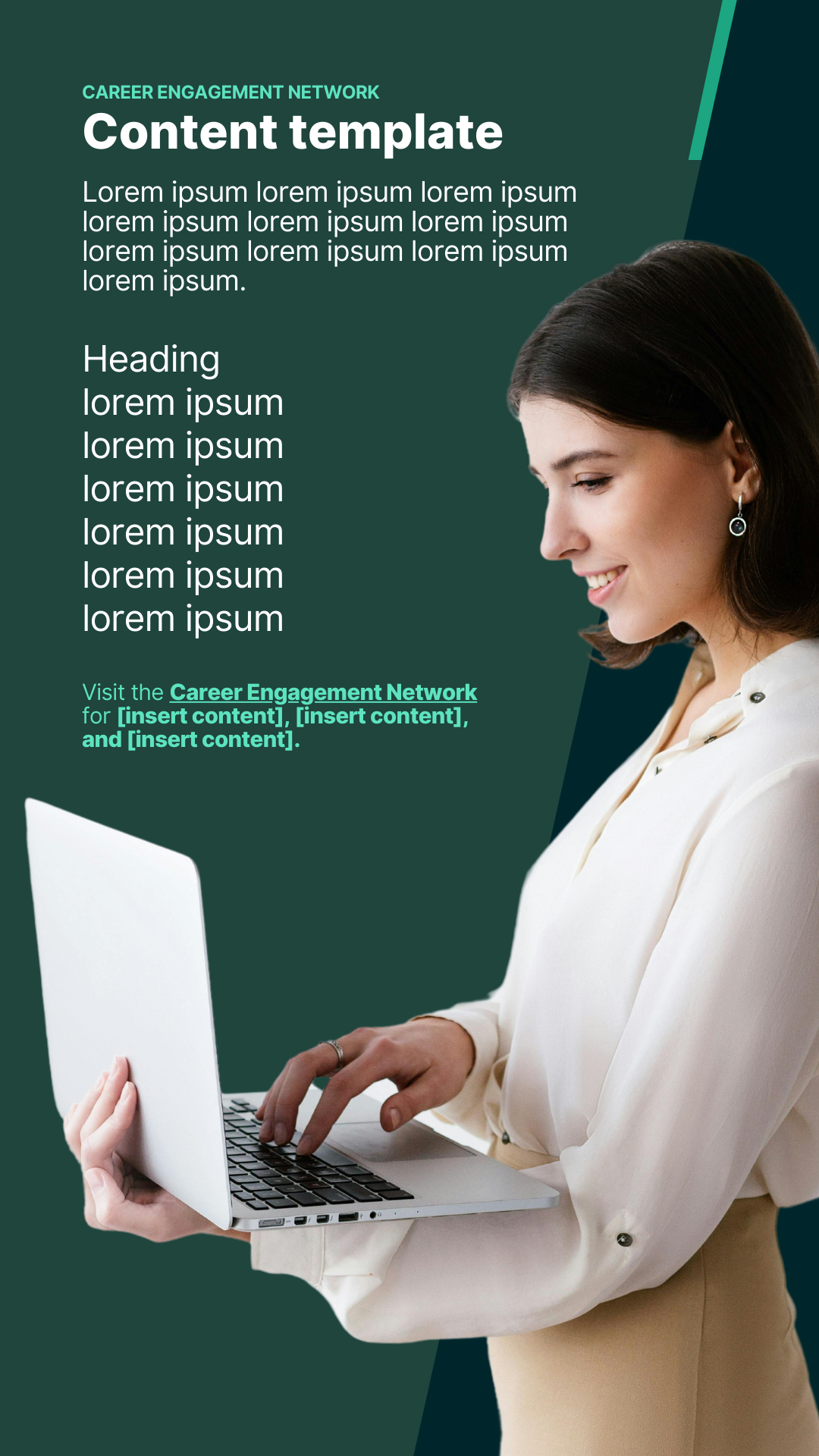
Sample branded template for content.
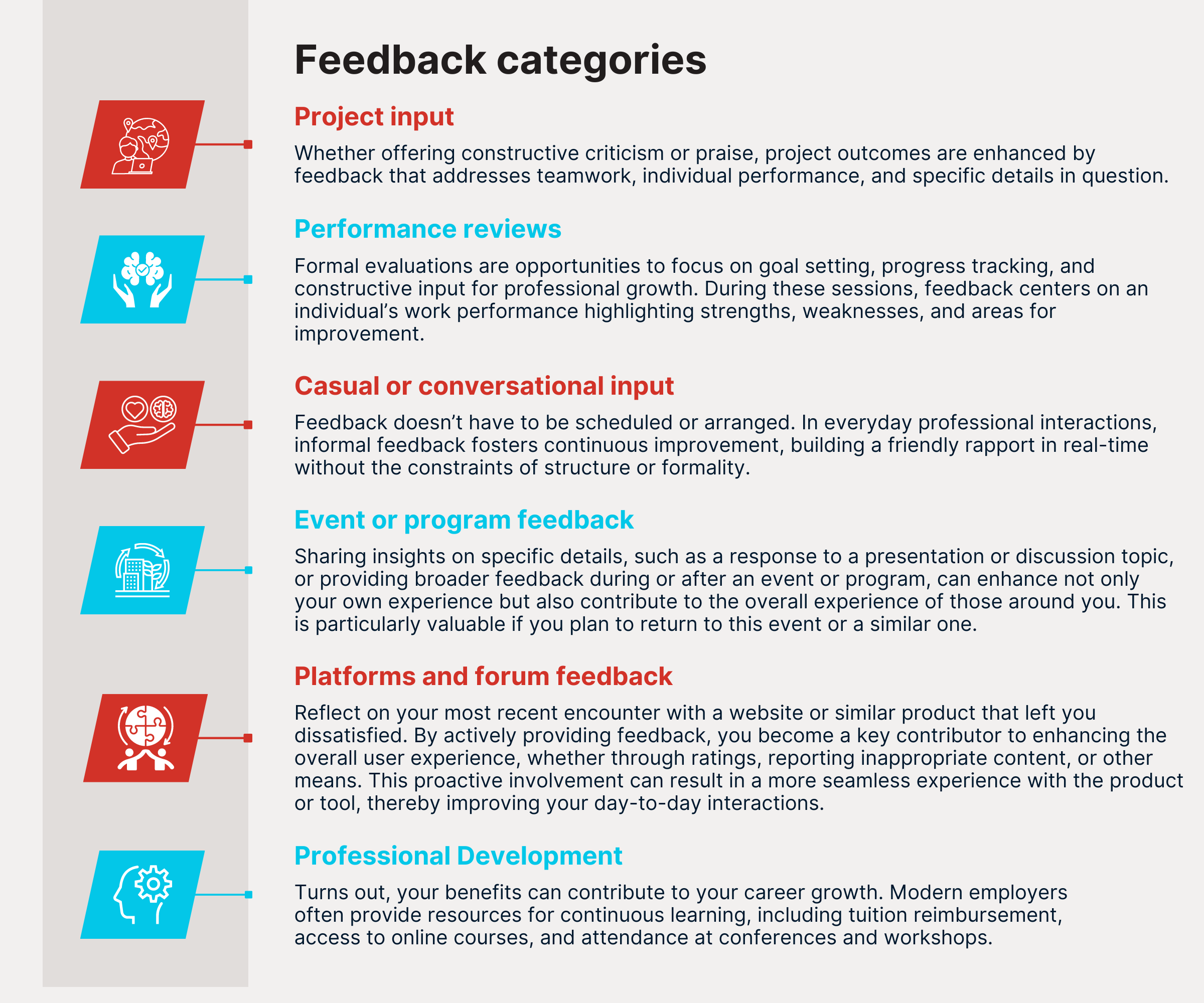
Graphic created for an article from a template.
Initiative: Website Redesign and Digital Content Reimagination
-
Completed Project: The digital product careers.edX.org launched Spring 2023 as a direct result of this strategic initiative. Note: You must create an edX.org account to view the website.
-
This project arose from a critical business need to deliver career content, support, and resources to edX's expansive user base, which now exceeds 83 million. Our objective was to modernize and repurpose outdated content from careernetwork.2u.com for the tech-savvy edX community and align it with current job market trends and user personas.
-
Our approach to this project was conducted in phases and was highly collaborative, starting with a research phase that leveraged multidisciplinary knowledge and experience. This process enabled us to thoroughly assess and deepen our understanding of edX’s consumer-facing brand and personas, identifying user needs, desires, and interactions with existing web content. We pinpointed gaps and areas of opportunity for content enhancement and expansion, informed by market trends, feedback data, and web development resources.
This approach is inherently data-centric and learning-based, emphasizing UX design and site architecture improvements, research-driven decision-making, and human-centric collaboration across teams to integrate insights from relevant subject matter experts.
-
During our research phase, we met with internal stakeholders from various teams, including career, marketing, product, copywriting, and social media, to understand and dissect the edX user base and their interest in a digital product offering career-related content, events, and advice. We also leveraged course registration data, market research, and resources like the Bureau of Labor Statistics to identify key industries and subjects of interest.
From our extensive research, we uncovered several key insights:
Our user base prefers dynamic content with a fresh, personable, and professional tone of voice.
Our existing industry content was not adequately meeting the needs of our current audience.
Content was primarily read by those starting their careers, but it also attracted more advanced professionals.
Social proof is necessary to back up claims, establish trust, and highlight our competitive advantage of relating content to uniquely human experiences.
Certain professional topics resonate with our audience significantly more than others.
-
Developed frameworks for various types of website content, including samples, career pages, guides, and templates
Created written content for over 100 web pages
Revamped and published over 100 web pages
Added featured images to all content
Produced multimedia social proof content for career pages and guides
-
I collaborated closely with one other team member to manage and execute this project. Our goal was to assess our content, address the needs of our audience, and make it more dynamic and aligned with the modern workforce. We facilitated our team's transition towards this project through frameworks, SOPs, working sessions, and regular check-ins.
We worked as equals on this project, each contributing up to 10 pieces of content and collaborating with others to optimize their work. Additionally, we partnered with UX/UI and product teams to pitch and prototype new page layouts that aligned with our content changes. I ensured these designs were implemented in Figma and was responsible for integrating the new content onto our content management site, WordPress.
Applicant Tracking System guide after site improvements
Applicant Tracking System guide before site improvements
Initiative: Furniture Layout and Fabrication Planning
-
Completed Project: Cafés in the Washington, D.C. metropolitan area.
The strategic work is tangibly represented in several cafés across the Washington, D.C. area. At least five locations currently showcase the furniture layout, fabrication planning, and installation work from this project.
-
While each café location presented unique challenges, the primary goals remained clear: Design and create inviting café spaces that cater to distinct community needs, promote a sense of belonging and comfort, and blend functionality with aesthetic appeal that complements the quality of the products offered. In addition to these goals, the project aimed to ensure the fabrication and installation teams were well-prepared for success with comprehensive inventory, fabrication plans, and flexibility to adapt to changing conditions as necessary.
-
Our approach to this project was straightforward and data-driven: Enhance the café experience to match the quality of the coffee through extensive site visits, user research, and empathy-based conversations.
We utilized existing café buildout plans and current traffic patterns to observe customer behaviors and preferences. By studying communities and neighborhoods, we gained a deeper understanding of their unique needs and conditions. Additionally, market and design research ensured that our solutions were relevant, functional, and visually appealing.
Iterative improvement was a key aspect of our approach. We continuously monitored on-site conditions, furniture usage, and space flow post-launch, making regular adjustments to enhance the overall experience.
-
During our empathy research phase, we met with café staff and leadership to identify and understand existing hurdles, conditions, and areas for enhancement.
From our extensive research, we uncovered several key insights:
Humans have feet. Therefore, additional bumpers are necessary to keep café spaces mess-free and injury-free.
Menu visibility is crucial. Café spatial designs should ensure menu readability across the space.
Comfort is a spectrum. The need for seating varies based on the location of the café and the community’s preferences and reasons for showing up.
In most cases, function > fashion. Certain design decisions can sometimes create more hassle and work for café staff, leading to an unpleasant experience for those involved in café operations.
-
Spatial café plans
Site measurements
Site sketches
Furniture plans and designs
Installation plans
Fully installed, turnkey café spaces
-
In this position, I contributed to every phase of the process, from creating spatial layout drawings to developing comprehensive fabrication plans, and even fabricating and installing the pieces. I was deeply involved in hands-on tasks such as making and installing furniture, while also overseeing the project at a high level. This included sourcing materials and supplies, and mapping out weekly plans to ensure the successful execution of our designs.
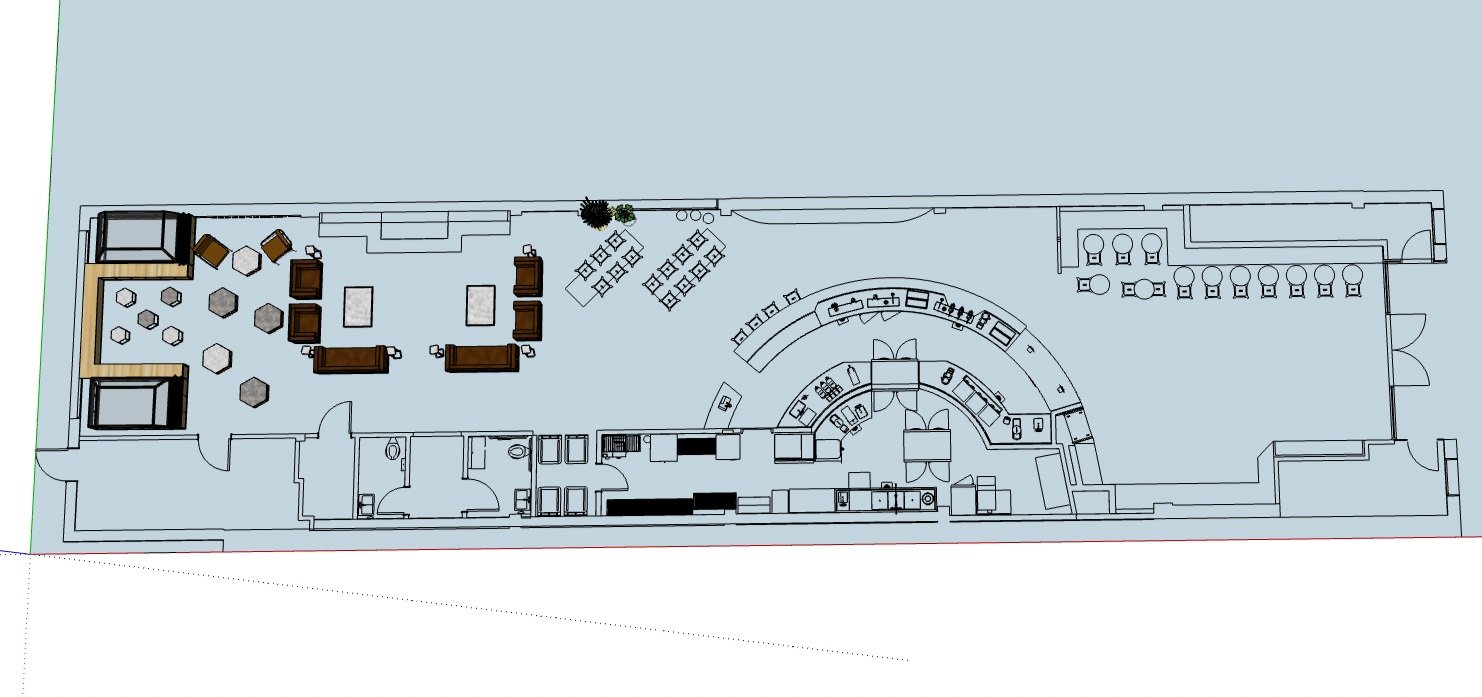
Screenshot of a café layout.
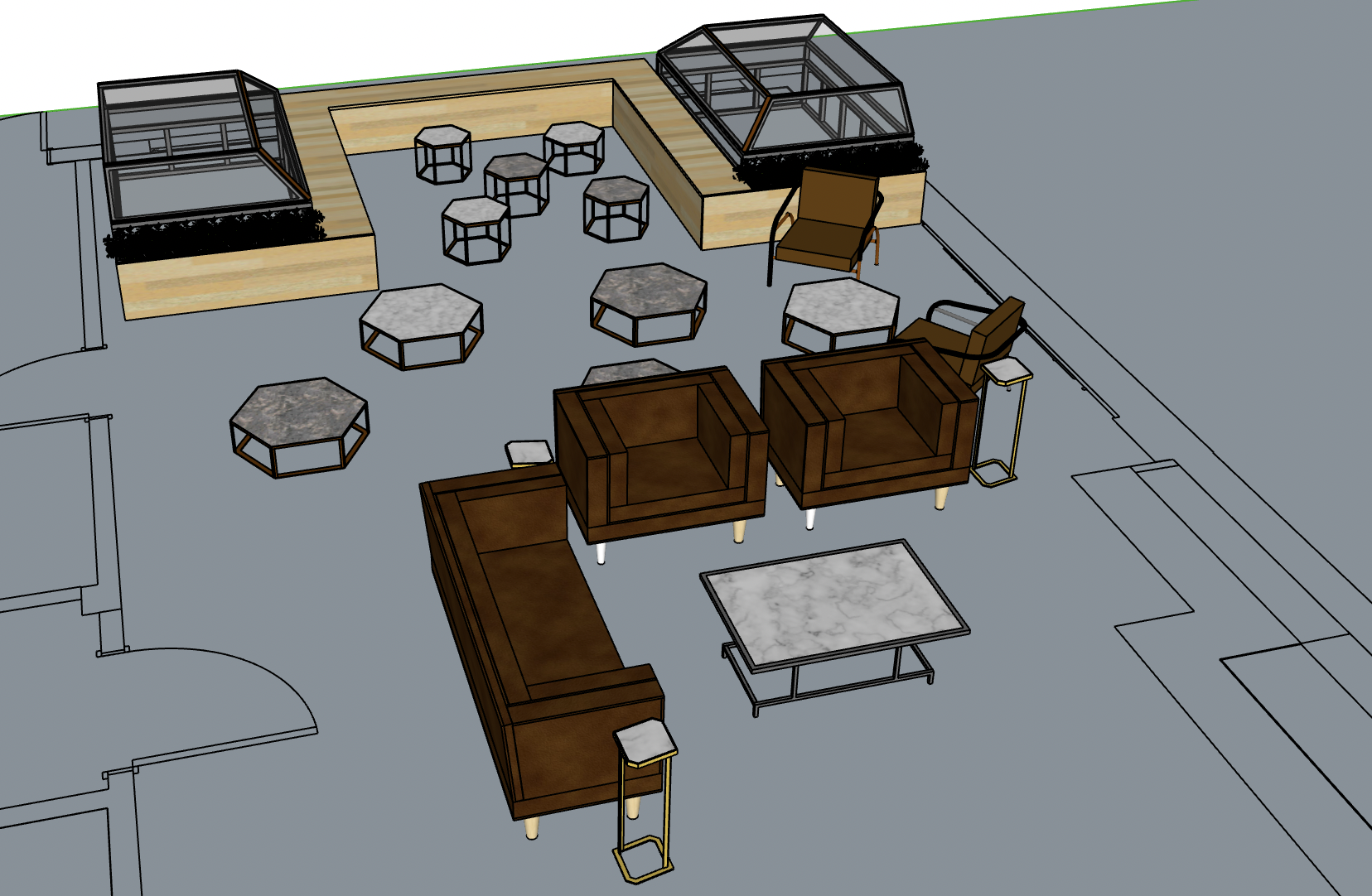
Screenshot of a café layout with furniture details.
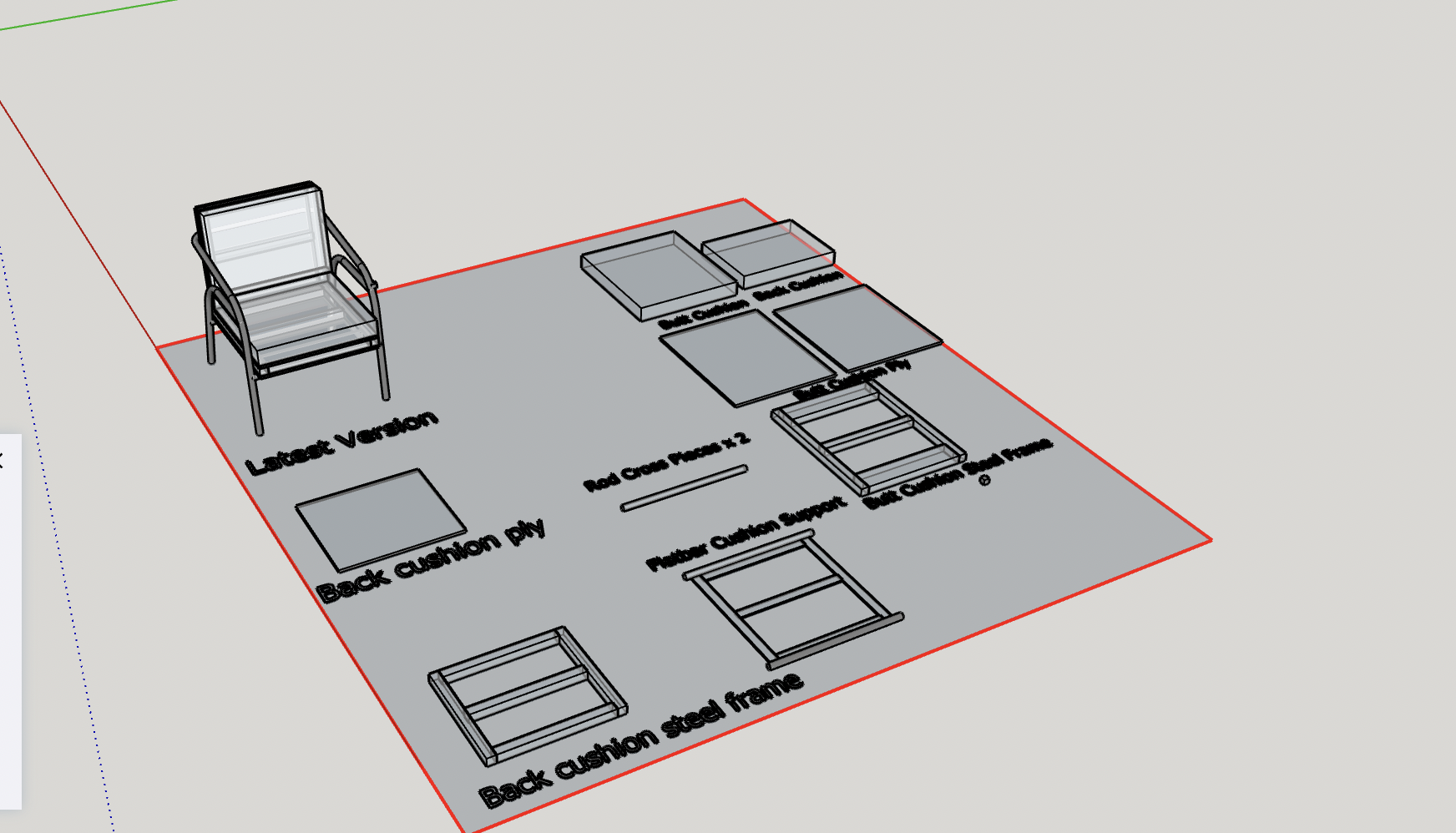
Screenshot of a chair design plan.



